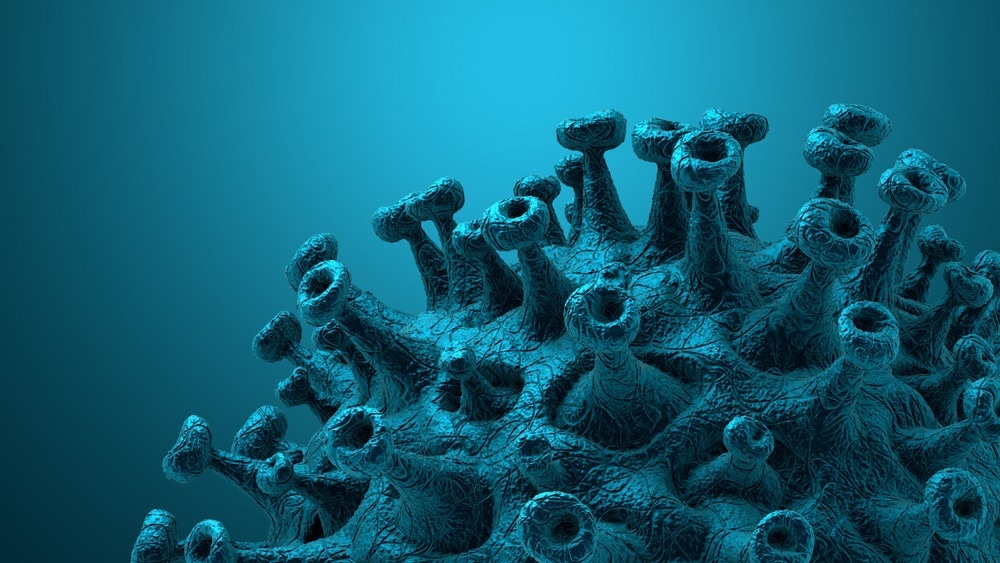Infectious diseases are a major worldwide issue caused by viral, bacterial, parasitic, and fungal organisms with varied degrees of severity. When these agents are detected early, they can be prevented and treated, saving lives and money. Here, we explore the application of nanomedicine to fight infectious diseases.

Image Credit: CROCOTHERY/Shutterstock.com
Introduction to Nanomedicine in Fighting Infectious Diseases
Infectious and parasitic disorders account for 9.7% of global mortality, with TB (2.3%), diarrheal bacterial infections (2%), meningitis (0.5%), encephalitis (0.2%), and bacterial sexually transmitted illnesses (syphilis, 0.2%), among the leading causes. 1
Vaccinations and antibiotics have decreased the morbidity and death rates from infectious diseases (IDs), yet overuse of these drugs has led to an increase in antibiotic resistance. Conventional treatments face obstacles when dealing with multidrug-resistant bacteria such as methicillin-resistant Staphylococcus aureus (MRSA). 2
Conventional vaccines are essential for the prevention of disease, though some may not offer total safety, and live vaccines might not be appropriate for individuals with weaker immune systems. 2
Nanomedicine has transformed the medical industry, with approximately 100 licensed products by 2020 covering pharmaceutical delivery, biomaterials, imaging, and medical devices. 2,3
Nanotechnology Solutions for Infectious Disease Control
Nanotechnologies in medicine have tremendous potential for combating and treating infectious diseases, and their capabilities have been investigated for use in antiviral drug delivery, vaccine development, and pathogen identification. 2
Nanomaterials, particularly nanoparticles (NPs), have distinct physicochemical features that enable the rapid and accurate identification of microbial infections, with some possessing inherent antibacterial activities.4
They can also reduce antibiotic resistance by interacting with resistance mechanisms, making them effective drug-delivery vehicles with fewer adverse effects. Antimicrobial nanoparticles in medical equipment prevent bacterial infection, whereas nanomaterials work as delivery vehicles or vaccine adjuvants, enhancing immune responses. 2
Antiviral and antibacterial nanomaterials are also used as wound dressings to stop infections, and they are included in gloves, masks and disinfectants, among other protective gear. 5
Nanoparticle-based Drug Delivery Systems
NPs can be used to transport medications, increasing efficacy and decreasing side effects. 5
Ethylcellulose NPs (EC-NPs) for amphotericin release (delivery) have been shown to exhibit high bioavailability, good stability, and low cytotoxicity, making them a promising nano-delivery vehicle for oral medicines for the treatment of fungus and parasite diseases. 6
Drug delivery has been studied with nanoparticulate systems such as quantum dots, polymeric micelles, biodegradable polymeric nanoparticles, nanocapsules, solid lipid nanoparticles (SLN), nanoliposomes, and metal nanoparticles. 7
They provide advantages such as increased medication bioavailability, biological activity and stability protection, and tailored delivery. 7
The encapsulation of antimicrobial medicines into nanoparticle systems has significant promise for enhancing treatment efficacy while reducing adverse effects. Regulating particle size, surface characteristics, and drug release are important aims in nanoparticle design because they allow for location-specific action at optimum rates and dosages. 7
Nanovaccines
Nanotechnology is being employed to produce enhanced vaccine delivery and preventative measures. 8
A recent study proved the efficacy of NPs as a physical barrier to disease invasion. The potency of heparin was greatly increased by attaching it to a poly(dimethylsiloxane) (PDMS) block copolymer and inserting it into polymersomes that mimicked red blood cells. 8,9
The heparin-polymersome combination not only functions as a medication, blocking parasite invasion, but it also has vaccine-like properties, making the parasite receptive to the host's immune system. Furthermore, it could be used to fight infectious diseases like malaria. 9
Wang et al. (2024) demonstrated the novel use of inhalable hybrid (mixed) nanovaccines. They created an inhalable nanovaccine (NVRBD-MLipo) to improve protective immunity against severe acute respiratory syndrome coronavirus 2 (SARS-CoV-2) infection. 10
The nanovaccine effectively activated alveolar macrophages and induced T and B cell responses, resulting in increased systemic and mucosal immune responses. NVRBD-MLipo demonstrated broad spectrum neutralizing activity against variants of SARS-CoV-2, protecting vaccinated mice from infection. 10
This nanovaccine shows potential in treating respiratory infectious disorders such as coronavirus 19 (COVID-19) and influenza. 10

Image Credit: AnaLysiSStudiO/Shutterstock.com
Nanoantibiotics
In current contexts, antimicrobial nanomaterials, known as "nanoantibiotics," demonstrate antimicrobial effectiveness either independently or in conjunction with antibiotics. 11
Nanoantibiotics (nAbts) have several advantages, such as multi-pathway microbial control and improved administration features like controlled release. 11
Nanoantibiotics have garnered immense interest in combating drug resistance observed in various pathogenic microorganisms against conventional antibiotics. Nanoparticle-delivered pharmaceuticals outperform free antibiotics at comparable doses in terms of bacterial growth inhibition, drug toxicity, and drug release duration. 12
Smart polymers can encapsulate various medicines or antimicrobials with stimuli-responsive linkers, allowing the development of flexible and tailored antimicrobial agents. 12
Antibiotics are encapsulated within the hydrophobic core of polymeric micelles created by amphiphilic copolymers. This allows for good solubilization, high loading, and regulated release. 13
They also suppress non-specific reticuloendothelial system (RES) absorption while remaining stable in the gastrointestinal (GI) tract. Methoxy poly(ethylene glycol)-poly(lactide) (mPEG-PLLA) diblock copolymers enhanced lung targeting and oral bioavailability of pyrinezolid, an oxazo-lidinone based medication effective against Gram-positive bacteria including MRSA. 13
PLLA provided biocompatibility and degradability, mPEG improved the stability and retention time of pyrinezolid. Pyrinezolid micelles had targeted lung aggregation and increased oral bioavailability (99.7%), which was beneficial for the treatment of MRSA-associated pneumonia. 13
Challenges and Advances in Nanomedicine for Infectious Diseases
Nanotechnology faces manufacturing and regulatory challenges in treating infectious diseases (IDs). Optimizing synthesis for low-resource settings, conducting toxicological tests, and ensuring patient acceptance are all challenges.
Toxicity studies are critical for evaluating the potential risks of increasing nanomaterials in biological applications. Nanomedicine biodistribution is influenced by the type of material, surface modification, dosage, and distribution at the cellular and organismal levels. 14
Overcoming these challenges necessitates interdisciplinary teamwork, environmental considerations, and managing regulatory difficulties. 15
Despite challenges, nanotechnology's quick translation during the current COVID-19 epidemic provides optimism for solving IDs, stressing the potential for effective treatments with adequate stakeholder collaboration. 15
Future Perspectives and Emerging Opportunities
Nanotechnology provides intriguing diagnostic and treatment options for infectious diseases. In the coming years, novel nanotechnological tools such as nanostructures capable of crossing biological barriers, remote-controlled nano-probes, completely integrated sensory nano-electronic systems, and adaptable chemical structures for accurate medication delivery and targeted treatment are expected. 16
An area of research that shows promise is the employment of "nanobots" that operate in the bloodstream like "Exocet" missiles, reducing the collateral damage that traditional medications inflict to healthy cells. Such developments create intriguing new opportunities for healthcare research and innovation. 16
References and Further Reading
- Mortality and global health estimates. https://www.who.int/data/gho/data/themes/mortality-and-global-health-estimates. Accessed March 14, 2024.
- Mehrabi MR, Soltani M, Chiani M, Raahemifar K, Farhangi A. Nanomedicine: New Frontiers in Fighting Microbial Infections. Nanomaterials. 2023;13(3). doi:10.3390/NANO13030483
- Moradi Kashkooli F, Soltani M, Souri M, Meaney C, Kohandel M. Nexus between in silico and in vivo models to enhance clinical translation of nanomedicine. Nano Today. 2021;36:101057. doi:10.1016/J.NANTOD.2020.101057
- Gregory AE, Titball R, Williamson D. Vaccine delivery using nanoparticles. Front Cell Infect Microbiol. 2013;4(MAR):38859. doi:10.3389/FCIMB.2013.00013/BIBTEX
- Huang Y, Guo X, Wu Y, et al. Nanotechnology’s frontier in combatting infectious and inflammatory diseases: prevention and treatment. Signal Transduct Target Ther 2024 91. 2024;9(1):1-50. doi:10.1038/s41392-024-01745-z
- Kaur K, Kumar P, Kush P. Amphotericin B loaded ethyl cellulose nanoparticles with magnified oral bioavailability for safe and effective treatment of fungal infection. Biomed Pharmacother. 2020;128. doi:10.1016/J.BIOPHA.2020.110297
- Salouti M, Ahangari A, Salouti M, Ahangari A. Nanoparticle based Drug Delivery Systems for Treatment of Infectious Diseases. Appl Nanotechnol Drug Deliv. July 2014. doi:10.5772/58423
- Mitchell SL, Carlson EE. Tiny Things with Enormous Impact: Nanotechnology in the Fight Against Infectious Disease. ACS Infect Dis. 2018;4(10):1432. doi:10.1021/ACSINFECDIS.8B00138
- Najer A, Wu D, Bieri A, et al. Nanomimics of host cell membranes block invasion and expose invasive malaria parasites. ACS Nano. 2014;8(12):12560-12571. doi:10.1021/NN5054206/SUPPL_FILE/NN5054206_SI_001.PDF
- Wang S, Ding P, Shen L, et al. Inhalable hybrid nanovaccines with virus-biomimetic structure boost protective immune responses against SARS-CoV-2 variants. J Nanobiotechnology. 2024;22(1):1-16. doi:10.1186/S12951-024-02345-3/FIGURES/8
- Huh AJ, Kwon YJ. “Nanoantibiotics”: A new paradigm for treating infectious diseases using nanomaterials in the antibiotics resistant era. J Control Release. 2011;156(2):128-145. doi:10.1016/J.JCONREL.2011.07.002
- Engin AB, Engin A. Nanoantibiotics: A Novel Rational Approach to Antibiotic Resistant Infections. Curr Drug Metab. 2019;20(9):720-741. doi:10.2174/1389200220666190806142835
- Wu ZL, Zhao J, Xu R. Recent advances in oral nano-antibiotics for bacterial infection therapy. Int J Nanomedicine. 2020;15:9587-9610. doi:10.2147/IJN.S279652
- Dash SR, Kundu CN. Advances in nanomedicine for the treatment of infectious diseases caused by viruses. Biomater Sci. 2023;11(10):3431-3449. doi:10.1039/D2BM02066A
- Kirtane AR, Verma M, Karandikar P, Furin J, Langer R, Traverso G. Nanotechnology approaches for global infectious diseases. Nat Nanotechnol 2021 164. 2021;16(4):369-384. doi:10.1038/s41565-021-00866-8
- Chen X, Xu J, Ji B, Fang X, Jin K, Qian J. The role of nanotechnology-based approaches for clinical infectious diseases and public health. Front Bioeng Biotechnol. 2023;11:1146252. doi:10.3389/FBIOE.2023.1146252/BIBTEX
Disclaimer: The views expressed here are those of the author expressed in their private capacity and do not necessarily represent the views of AZoM.com Limited T/A AZoNetwork the owner and operator of this website. This disclaimer forms part of the Terms and conditions of use of this website.